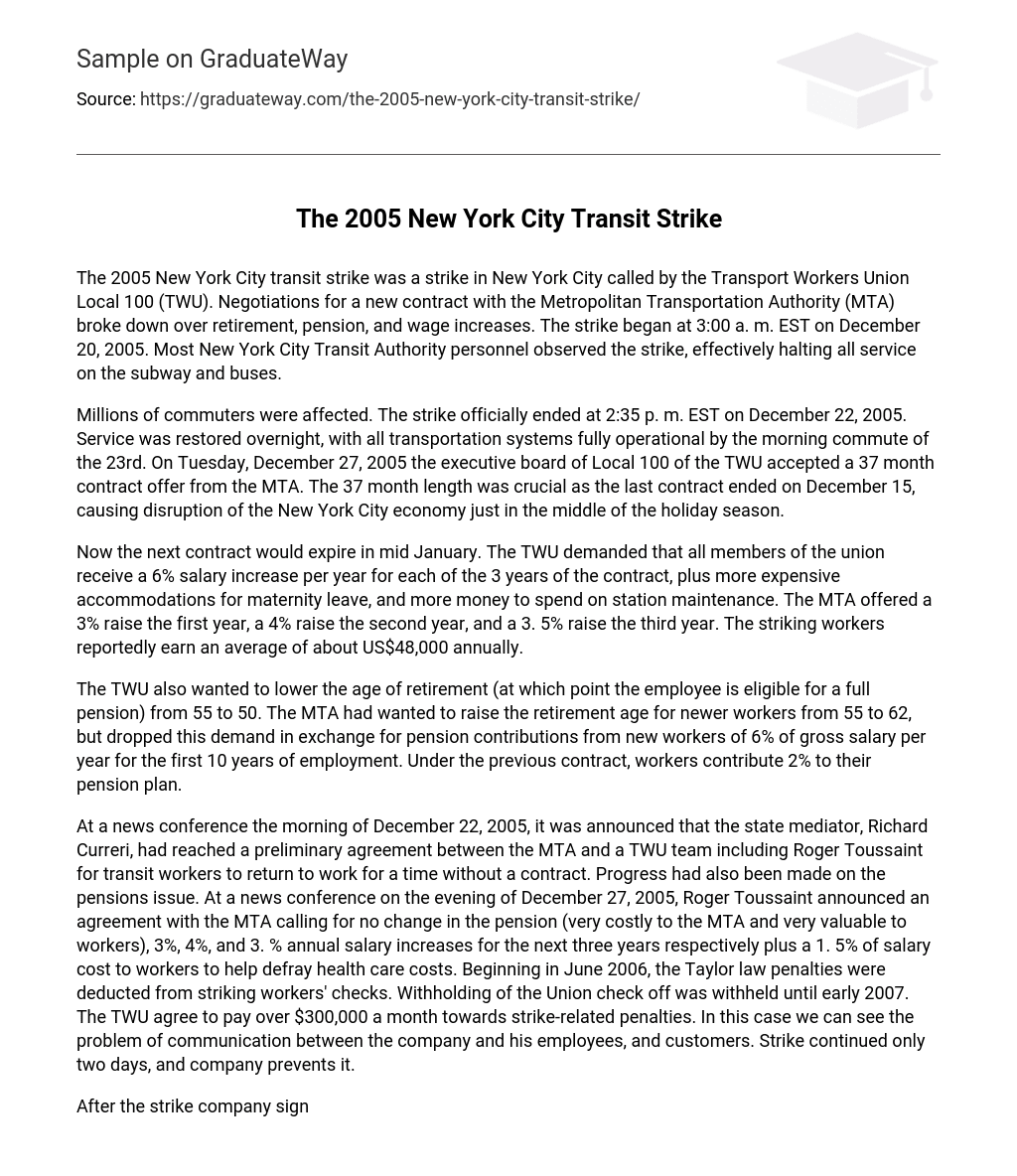The Transport Workers Union Local 100 (TWU) initiated the 2005 New York City transit strike, significantly impacting the city’s transportation services. The strike was a result of failed negotiations with the Metropolitan Transportation Authority (MTA) concerning retirement plans, pensions, and wage increases. It began at 3:00 a.m. EST on December 20, 2005, involving a majority of employees from the New York City Transit Authority and resulting in a total halt of subway and bus operations.
On December 22, 2005, at 2:35 p.m. EST, a strike that impacted numerous commuters ended, restoring all transportation systems to full operation by the morning commute on the 23rd. The executive board of Local 100 of the TWU accepted a contract offer from the MTA on Tuesday, December 27, 2005. This contract lasted for a crucial period of 37 months and followed a previous one that had caused disruption to the New York City economy during the holiday season and concluded on December 15.
The upcoming contract is set to expire in mid January. The TWU is advocating for a 6% annual pay increase for all union members over the duration of the 3-year contract, along with enhanced provisions for maternity leave and increased funding for station maintenance. In contrast, the MTA has proposed a salary increase of 3% in year one, followed by a 4% raise in year two, and ultimately a 3.5% hike in year three. There have been reports stating that employees who go on strike earn an average salary of about $48,000 per year.
The Transport Workers Union (TWU) aimed to decrease the retirement age to 50, enabling employees to obtain a complete pension. On the other hand, the Metropolitan Transportation Authority (MTA) initially suggested increasing the retirement age for new workers from 55 to 62. Nonetheless, they discarded this proposal and instead reached a compromise. According to this agreement, new staff members would allocate 6% of their gross salary annually towards their pension during the initial ten years of employment. This contrasted with the previous contract where employees only allocated 2%.
During a news conference on December 22, 2005, Richard Curreri, the state mediator, announced that he had achieved a preliminary agreement between the MTA and a TWU team led by Roger Toussaint. This agreement allowed transit workers to temporarily resume work without a contract and made progress on pension issues. A subsequent news conference on December 27, 2005 revealed an agreement between Roger Toussaint and the MTA in which it was ensured that the valuable pension would remain unchanged (despite being costly for the MTA). The agreement also included annual salary increases of 3%, 4%, and 3% for the next three years respectively. Additionally, workers would contribute 1.5% of their salary to cover healthcare costs.
Starting in June 2006, striking workers faced wage deductions as penalties under the Taylor Law. The Union check off was not given until early 2007. As part of their commitment related to the strike, TWU agreed to pay over $300,000 per month in penalties. This situation highlights a lack of communication among the company, its employees, and customers. Despite lasting only two days, further escalation of the strike was prevented due to efforts made by the company.
Following the strike, a 37-month agreement was reached by the company. The strike had both positive and negative implications. On one hand, it lasted only 2 days, demonstrating the company’s ability to swiftly address the issue. However, the management bears responsibility for the negative aspects of this situation, encompassing strategic problems as well. The strike served as a valuable lesson for both TWU and the labor movement in general. It is clear that persisting with leaders who are disconnected from their members will not produce fruitful outcomes.





